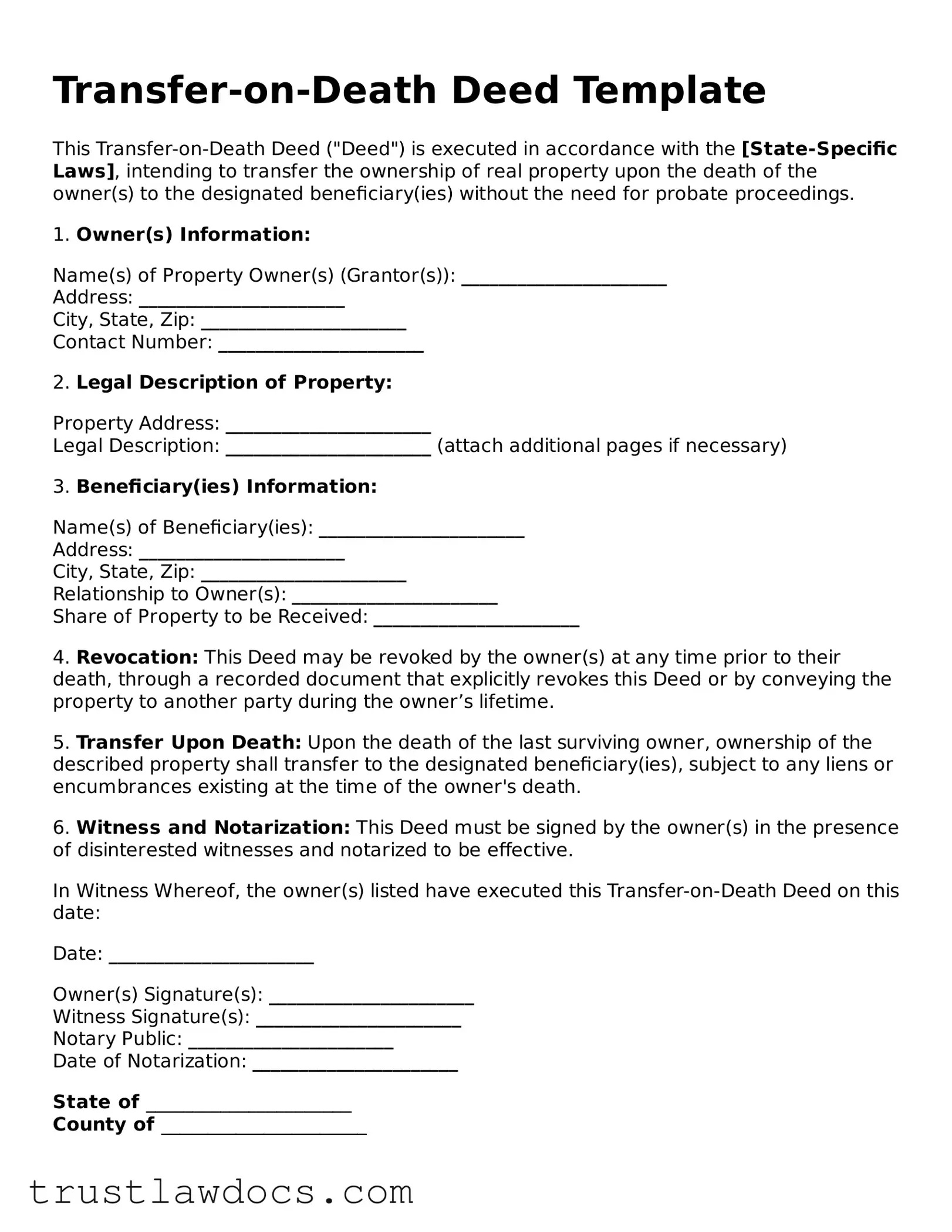What is a Transfer-on-Death (TOD) Deed?
A Transfer-on-Death Deed is a legal document that allows property owners to name a beneficiary who will inherit their property upon the owner's death, without the need for probate court proceedings. The property is transferred directly to the beneficiary after the owner's death, simplifying the process and avoiding the time and expense of probate.
How does a Transfer-on-Death Deed differ from a will?
While both a Transfer-on-Death Deed and a will can dictate who inherits property, a Transfer-on-Death Deed takes effect immediately upon the death of the property owner and bypasses probate court. A will, on the other hand, is subject to probate, which can be a lengthy and costly process.
Who can be named as a beneficiary in a Transfer-on-Death Deed?
Almost anyone can be named as a beneficiary in a Transfer-on-Death Deed. This includes family members, friends, or organizations. However, the beneficiary must be specifically named; generic designations like "my children" are not sufficient.
Can a Transfer-on-Death Deed be revoked or changed?
Yes, a Transfer-on-Death Deed can be revoked or changed at any time before the death of the property owner, as long as the owner is mentally competent. This is usually done by filing a new deed or a revocation of the TOD deed with the county recorder's office.
What happens if the beneficiary named in the Transfer-on-Death Deed dies before the owner?
If the beneficiary named in the Transfer-on-Death Deed dies before the owner, the deed typically becomes void unless an alternate beneficiary is named. The property would then be handled according to the owner's will or, if there is no will, through the state's laws of intestate succession.
Are there any costs associated with a Transfer-on-Death Deed?
There may be minimal costs associated with preparing and recording a Transfer-on-Death Deed, such as fees for legal assistance and recording fees at the county recorder's office. However, these costs are generally much lower than the expenses incurred during probate.
Does the beneficiary have any rights to the property before the owner's death?
No, the beneficiary has no legal rights to the property before the death of the owner. The owner retains full control over the property and can use, sell, or even change the beneficiary designation at any point during their lifetime.
Is a Transfer-on-Death Deed valid in all states?
No, Transfer-on-Death Deeds are not available in all states. It's important to check the laws in your specific state or consult with a legal professional to determine if this option is available and appropriate for your situation.
What happens if there is a conflict between the Transfer-on-Death Deed and the owner's will?
In most cases, the Transfer-on-Death Deed would take precedence over the will for the specific property designated in the deed. This is because the deed transfers ownership directly upon death, outside of the probate process that would enforce the will's terms.
